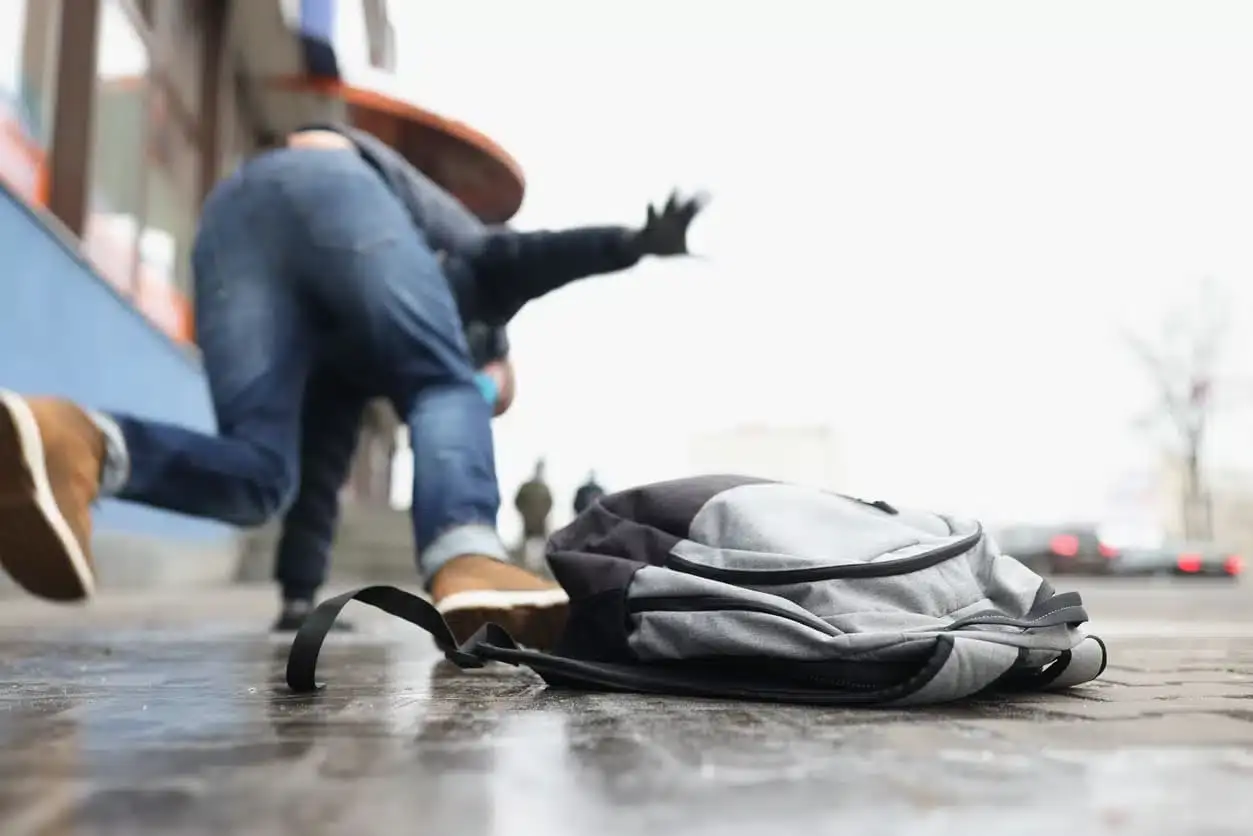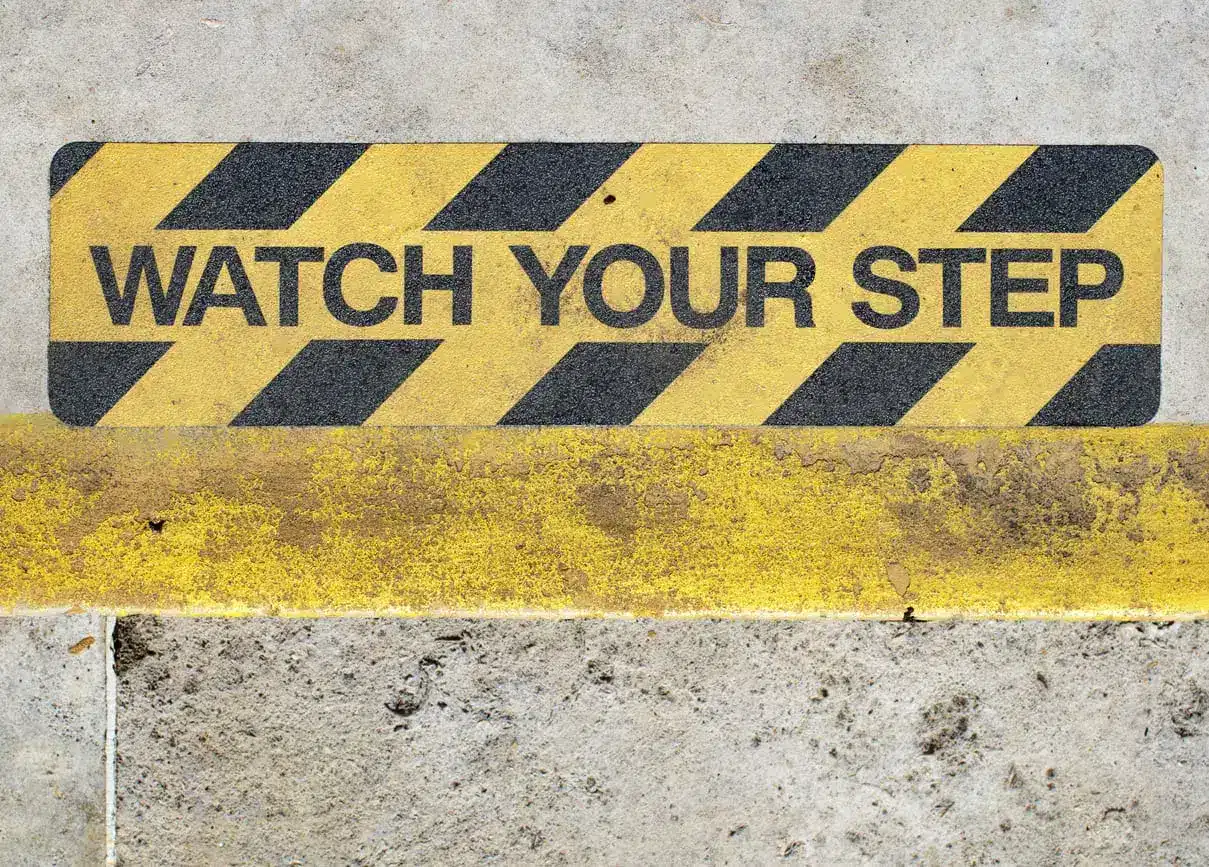Brooklyn Slip and Fall Accident Lawyer
Slip and fall accidents can happen just about anywhere in Brooklyn – from grocery stores to parks to restaurants. Most of these fall accidents are avoidable, but happen because businesses and property owners are negligent and allow dangerous conditions to exist on the premises.
If you’ve been hurt in a slip and fall accident in Brooklyn, New York, call The Platta Law Firm.
Slawomir Platta, Esq. Founding Partner
Our Brooklyn slip and fall accident lawyers will demand the maximum financial award you deserve. The Platta Law Firm has long been a trusted advocate of slip and fall accident victims and devastated families in Brooklyn, NY.
As leaders in personal injury litigation in New York with over 150 years of combined experience, our award-winning trial attorneys have successfully obtained hundreds of millions of dollars in damages in settlements and jury awards. We are ready to help you stand up, assert your rights, and fight for the compensation you deserve after an avoidable slip and fall in Brooklyn. Call our NYC law office to arrange a free consultation and get started today.
Table of Contents
ToggleThe Platta Law Firm Can Make a Difference After a Slip, Trip, and Fall Accident in Brooklyn
Proving that you slipped and fell because a business in Brooklyn was negligent can be quite a challenge. You’ll inevitably face resistance at every turn, as the owner tries to shift blame and sidestep responsibility for your accident. Force a fair fight by turning to our Brooklyn personal injury lawyers for help.
The Platta Law Firm is home to a top-rated legal team with over 150 years of combined experience and a proven ability to take on powerful corporations and win top results. We will be your most passionate advocate as we do everything in our power to prove your case and secure the life-changing monetary award you deserve. We will:
- Provide a free consultation so that you have the opportunity to learn about our law firm and the potential for your legal claim.
- Conduct a prompt and thorough investigation into your slip and fall.
- Gather evidence needed to prove negligence and secure the compensation you deserve.
- Consult trusted specialists and expert witnesses throughout the litigation process.
- Interview witnesses and parties with relevant information about your case.
- Handle all administrative aspects and legal paperwork on your behalf.
- Represent you during negotiations with the property owner, their insurance company, and other parties.
- Aggressively seek a life-changing verdict if the Brooklyn business refuses to take responsibility for your injuries.
When you choose The Platta Law Firm, you’ll get a team of attorneys that fights for you like family. We’re ready to do everything in our power to make a positive impact on your life. All you have to do is call our law office in New York City to discuss the details of your Brooklyn slip and fall accident claim. We provide a free consultation and work on contingency, so you pay absolutely nothing unless we win your case.
What Causes Most Slip and Fall Accidents?
Slip and fall accidents in Brooklyn can happen for a lot of different reasons. Typically, they are the result of concealed dangers or hazards, such as:
- Slippery floor surfaces, often due to a recent waxing
- Spills and puddles that haven’t been cleaned up
- Broken floorboards or stairs
- Unsecured handrails or railings
- Uneven transitions between rooms
- Unsecured rugs or carpets
- Loose cables and wires
- Clutter and debris
- Cracked pavement
- Icy sidewalks
- Uneven sidewalks
- Inadequate lighting
As long as a hazard is not open and obvious, the business or property owner can be financially responsible if a customer or visitor slips and falls. Our slip and fall accident attorneys in Brooklyn will carefully analyze the details of your case, determine exactly why and how the accident happened, and work to build a persuasive legal claim on your behalf.
Representing Clients in All Types of Brooklyn Slip and Fall Cases
At The Platta Law Firm, our attorneys have dedicated their careers to helping injured fall victims fight back and demand financial accountability from negligent businesses in Brooklyn and across New York City. We represent clients in slip and fall cases involving Brooklyn:
- Restaurants
- Bars and nightclubs
- Grocery and retail stores
- Warehouse and home improvement stores
- Bodegas and convenience stores
- Government buildings
- Parks and playgrounds
- Sidewalks
- Parking lots and garages
- Hospitals
- Nursing homes
- Schools, daycare centers, and universities
- Subway stations
Our personal injury attorneys in Brooklyn understand that every slip and fall accident case is different. We appreciate that each case will require a personalized approach and careful attention to detail. Benefit from our considerable experience, in-depth knowledge of New York premises liability law, and expansive network of resources to make the most of your slip and fall injury claim. Call us for help today.
What Do I Have to Prove to Win a Slip and Fall Accident Lawsuit?

When a slip, trip, or fall happens on property owned by someone else in Brooklyn, you can pursue compensation through a civil legal claim.
Slip and fall lawsuits are a matter of premises liability, which all boils down to negligence.
So, you will ultimately have the burden of proving that a business or property owner was negligent in the maintenance of their premises.
- Duty of Care: You must establish that the business had a duty to maintain the premises in a reasonably safe condition because you were there with their consent
- Breach of Duty: There must be evidence that the business knew or should have known about a slip and fall hazard, but failed to take reasonable steps to protect you.
- Causation: The hazard must have been the actual and proximate cause of your accident and resulting injury.
- Damages: You must be able to point to specific damages you’ve suffered, such as medical expenses or emotional distress.
Your goal is to demonstrate by a preponderance of the evidence that your accident would not have happened if the Brooklyn property owner had taken better care of the premises. If they’d inspected the property or fixed the slip hazard, you never would have gotten hurt.
Understanding the Difference Between a Slip and Fall and a Trip and Fall
“Slip and fall” and “trip and fall” are often used interchangeably. However, these types of accidents are actually quite different – from the things that cause them to the potential injuries victims can suffer. Slip and fall accidents occur when a victim’s feet slip or slide on the floor. This causes their feet to move out from under them and their torso to fall backward. Injuries that are common in slip and fall accidents include:
- Concussion
- Head injury
- Brain injury
- Back injury
- Spinal fracture
- Spinal cord injury
- Bruising
- Soft tissue injury
Trip and fall accidents occur when an object or obstruction causes a person’s foot to become stuck. Momentum carries their upper body forward rapidly, throwing them off-balance and ultimately causing them to fall. Injuries that are commonly associated with trips and falls include:
- Broken bones, generally to the fingers, hands, and arms
- Knee injury
- Eye injury
- Dental injury
- Joint injury
- Cuts and lacerations
Whether you slip and fall or trip and fall in Brooklyn, it’s also possible to suffer burns, amputated limbs, nerve damage, internal organ damage, and other catastrophic injuries, depending on the circumstances.
What Compensation Can I Get if I’ve Been Hurt in a Slip and Fall Accident in Brooklyn?
When you file an insurance claim or lawsuit after a slip and fall accident in Brooklyn, you can seek compensatory damages from a negligent business or property owner. Compensatory damages include money for monetary losses associated with your fall accident (known as economic damages) and harder-to-value life changes you experience as a victim (non-economic damages). Examples include:
- Current and future medical expenses
- Prosthetics and medical devices
- Rehabilitation
- Nursing assistance
- Disability
- Lost wages
- Out-of-pocket costs
- Funeral expenses (if a slip and fall accident in Brooklyn is fatal)
- Chronic physical pain
- Scarring and disfigurement
- Mental anguish
- Pain and suffering
- Loss of enjoyment of life
Punitive damages can also be awarded by a Brooklyn jury if there’s compelling proof of intentionally harmful conduct or gross negligence. Count on our slip and fall accident attorneys in Brooklyn to help you fight to recover all of the damages to which you’re entitled under New York state law.
How Can Shared Fault Impact my Slip and Fall Settlement in New York?

Expect the business owner to blame you for your accident. They might argue that the hazard was obvious and that your own negligence caused you to get hurt.
In these situations, it’s best to be prepared. New York has a pure comparative negligence system.
Sharing any responsibility for a slip and fall will adversely affect your ability to recover compensation. Damages are reduced in direct proportion to fault. If a property owner is able to establish that you are 50 percent responsible for a slip and fall accident, your damages will be cut in half. This could mean recovering $50,000 when your slip and fall injury claim is worth $100,000.
Our Brooklyn slip and fall attorneys will anticipate these tactics. We’ll demand proof and work to gather evidence of our own that shifts blame in another direction. The less liability you share, the more money you can potentially recover when your slip and fall accident lawsuit is resolved.
How Long Is the Statute of Limitations for Slip and Fall Lawsuits in Brooklyn?
It depends. The statute of limitations for slip and fall lawsuits in New York is:
- Three years for fall accidents resulting in personal injury, and
- Two years for fall accidents resulting in wrongful death.
If you’ve been hurt, you must file your claim before the third anniversary of your slip and fall accident. If you miss the filing deadline, you’ll be prohibited from asserting your rights and demanding compensation.
Trusted Brooklyn Slip and Fall Lawyers Ready to Fight for You
Were you injured in a slip and fall accident in Brooklyn, New York? Contact The Platta Law Firm. Our Brooklyn slip and fall accident attorneys can help you prove that a business’s negligence caused you to get hurt and hold them financially accountable for the resulting damages.
When you choose The Platta Law Firm, you benefit from a top-rated legal team with 150+ years of combined legal experience. We’ve won hundreds of millions for our clients. Let us fight for you, too. Schedule a free consultation by calling our New York City, NY law office today.
Brooklyn Neighborhoods We Serve
Central Brooklyn
Crown Heights, Weeksville, Flatbush, East Flatbush, Farragut, Fiske Terrace, Prospect Park, Prospect Lefferts Gardens, Prospect Park South, Windsor Terrace, Kensington, Ocean Parkway, and Parkville.
Eastern Brooklyn
Brownsville, Canarsie, East New York, City Line, Cypress Hills, New Lots, Spring Creek, Starrett City, and Highland Park.
Northern Brooklyn
Bedford–Stuyvesant, Ocean Hill, Stuyvesant Heights, Bushwick, Wyckoff Heights, East Williamsburg, Greenpoint, and Williamsburg.
Northwestern Brooklyn
Brooklyn Heights, Brooklyn Navy Yard, Clinton Hill, Downtown Brooklyn, Bridge Plaza, Dumbo, Fulton Ferry, Fort Greene, Prospect Heights, and Vinegar Hill.
South Brooklyn
Boerum Hill, Carroll Gardens, Columbia Street Waterfront District, Cobble Hill, Gowanus, Park Slope, South Park Slope, Greenwood Heights, and Red Hook.
Southern Brooklyn
Barren Island, Bergen Beach and Georgetown, Coney Island, Brighton Beach, West Brighton, Manhattan Beach, Sea Gate, Sheepshead Bay and Madison, Homecrest, Midwood, Flatlands, Gerritsen Beach, Gravesend, Marine Park, Mill Basin, and Plumb Beach.
Southwestern Brooklyn
Bay Ridge, Bensonhurst, Bath Beach, New Utrecht, Borough Park, Dyker Heights, and Sunset Park.





